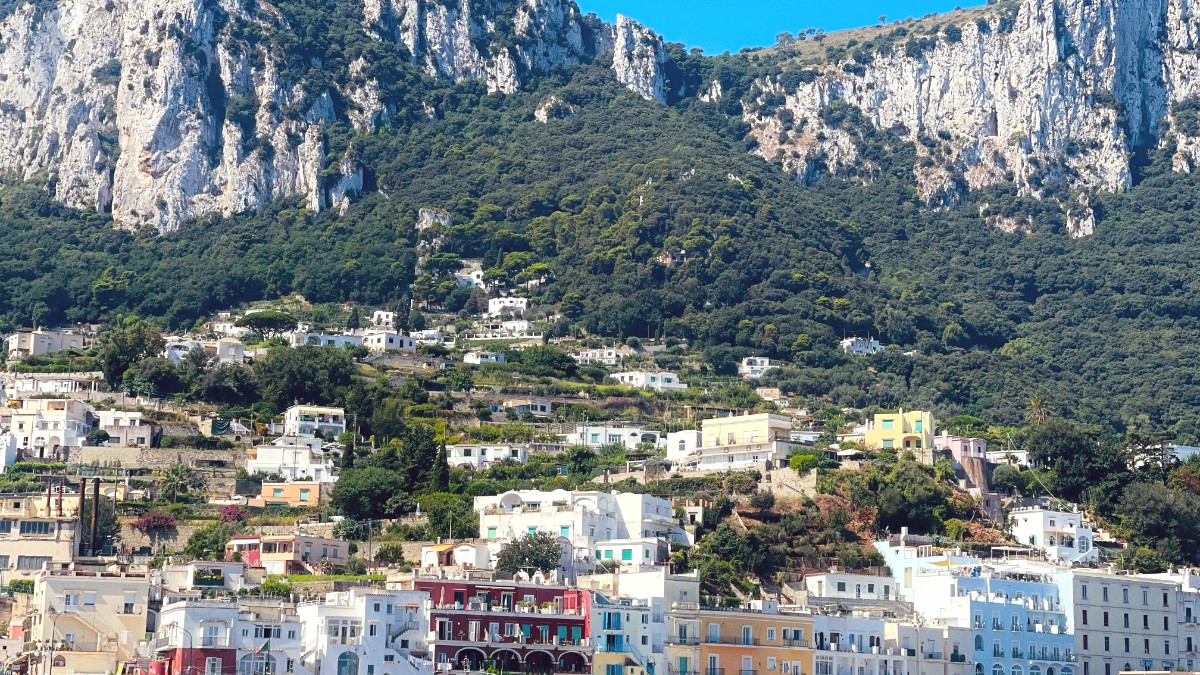
Campania, Italy
A visit to Capri presents a chance to experience the famed Italian "dolce vita." You discover ancient Roman sites, cruise past imposing rock formations, or simply relax with a refreshing limoncello. Whether you seek adventure on hiking trails, tranquility in secluded gardens, or the buzz of high-end boutiques, Capri delivers it all. The island’s compact size makes it perfect for exploration, yet it holds enough depth for many days. Here, natural splendor and sophisticated culture combine for a truly special trip.
Capri invites you to slow down and appreciate its rhythm. Enjoy mornings with freshly brewed espresso in a sun-drenched piazza. Spend afternoons swimming in crystal-clear waters or exploring ancient pathways.
Evenings offer delicious meals with views of the sunset over the sea. The island’s charm lies in its ability to combine luxurious experiences with simple pleasures. Every corner shows a new vista, a fragrant garden, or a piece of history. Prepare for Capri's enduring appeal.
Capri sits majestically in the southern part of the Bay of Naples, part of Italy's Campania region. It lies off the Sorrentine Peninsula, easily accessible from both Naples and Sorrento by ferry. This island covers approximately 10.4 square kilometers (4 square miles). Despite its small size, Capri features dramatic topography with peaks like Monte Solaro and Monte Tiberio. Its rugged coastline includes towering limestone cliffs and numerous grottoes. The island boasts an unique microclimate, contributing to its rich biodiversity and famous flora.
Capri divides into two main municipalities: Capri Town and Anacapri. Capri Town occupies the eastern, lower slopes, closer to the main port of Marina Grande. Anacapri sits on the higher, western side of the island. It presents a more tranquil, traditional atmosphere, with narrow streets, craft shops, and a relaxed pace. The two towns connect by a winding road and frequent bus service, making movement between them simple.
Evidence of human settlement from the Stone Age; Greek mythology places Sirens off its shores.
Emperor Augustus loved the island; Emperor Tiberius made it his main residence, building Villa Jovis.
Times of decline and pirate raids; became part of various kingdoms.
European intellectuals and artists rediscovered its charm; Axel Munthe built Villa San Michele.
Cemented status as a playground for international jet set and celebrities.
The island’s dramatic geology also gives rise to the iconic Faraglioni rock formations. These three towering sea stacks rise directly from the water near Capri's southeastern coast. They represent a signature landmark and a popular subject for photography. The sea surrounding Capri is part of a protected marine area, preserving its clear waters and diverse marine life. This designation reflects the island’s environmental stewardship.
Capri’s volcanic origins, combined with its limestone composition, create a landscape of breathtaking beauty and geological interest. The steep ascents and descents contribute to the island’s charm, making comfortable footwear a must for exploration.
The island’s position presents stunning panoramic views across the Bay of Naples, encompassing Mount Vesuvius, the Sorrentine Peninsula, and the neighboring islands of Ischia and Procida. Each viewpoint shows a new perspective on this remarkable island.
Image: A panoramic view of Capri's coastline with the Faraglioni rocks in the background.
Capri today is a testament to enduring beauty and refined taste. It brings travelers seeking a blend of natural wonder, historic charm, and sophisticated leisure. The island's iconic sights, like the Blue Grotto and the Faraglioni rocks, are instantly recognizable global symbols of beauty.
Beyond these famous landmarks, Capri is a refined experience that serves diverse interests.
Glamour defines much of Capri Town with its luxury boutiques and international brands. The Piazzetta acts as the island's main living room.
Capri’s natural environment remains a main draw. Hiking trails crisscross the island, leading to secluded viewpoints and ancient ruins. Boat tours explore the coastline.
Cuisine on Capri reflects its Neapolitan roots, with a focus on fresh, local ingredients. Seafood, ripe tomatoes, basil, and fragrant lemons are staples.
Anacapri, on the other hand, presents a quieter and more authentic feel. Located on the higher slopes, it gives a peaceful contrast to Capri Town's bustle.
A simple yet flavorful salad with fresh mozzarella, ripe tomatoes, and basil.
Handmade pasta filled with local caciotta cheese and marjoram, usually served with fresh tomato sauce.
A sweet lemon liqueur, locally produced and widely enjoyed, often served chilled after meals.
Full-service restaurants, ranging from traditional to fine dining. Expect a diverse menu and wine list.
More casual and typically family-run, serving homemade, regional dishes. Portions are often generous.
Specializes in various pizzas, often baked in a wood-fired oven. Many also offer salads and simple pasta dishes.